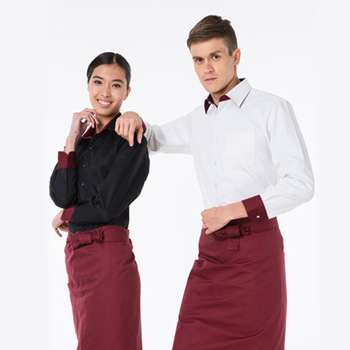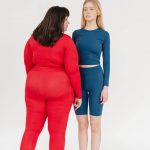You own it, I own it, but do we understand that much regarding it? Sure, we take care of it every day, and it is along virtually all enough time. I’m discussing clothing obviously. So common, many times, it becomes the overlooked item in sustainability initiatives. Recycled content, chlorine free, certified paper? Check. Energy efficient lighting (with recycling program for spent fluorescents)? Implemented years ago. Company uniforms? Well, yes. What about them?
Clothing carries a number of impacts, with respect to the type, content, and cleaning style. The material could be produced using huge amounts of pesticides, chemicals, and even unsustainable forestry activities. Shoes using leather, suede, or rubber, to begin with, can even be sites of interest. Even the traditional “dry cleaning” operation emits enormous concentrations of pollutants, while chemicals may remain from the garment. So are there alternatives?
In fact, there are several methods to reduce the environmental and social impacts of your wardrobe.
Cotton
Let’s start with cotton. A wonderful, soft material that has been the staple of several regions more than a hundred years. Today, nearly all cotton in clothing arises from conventionally grown crops; these could be sprayed with a variety of pesticides and fertilizers. This promotes a monoculture, or single-crop, situation. The natural properties in the land are hardly ever attended to, so more fertilizer and soil will constantly need, thus entering a continuing cycle. According to the Organic Trade Association, organic cotton is “grown using methods and materials who have a minimal effect on environmental surroundings. Organic production systems replenish and look after soil fertility, reduce the using toxic and persistent pesticides and fertilizers, and build biologically diverse agriculture.” Currently, nearly 1% of global cotton production is organic, however it is growing fast. Sales in most product categories are increasing nearly 50% annually. Consider organic cotton for the next group of company clothing runs and make up a difference!
Small addition: In personal experience, organic cotton is frequently softer as opposed to conventional equivalent, but usually shrink more on the 1st wash. Plan size orders accordingly.
Bamboo
It’s not just for floors! The latest trend in sustainable fashions, bamboo clothing includes a lot choosing it. The plant is one from the fastest growing on the planet, doesn’t require huge amounts of pesticide or fertilizer, which enable it to be grown organically. However, could it be really as “green” as retailers would have customers believe?
– In the effort to climb aboard an increasing fad, bamboo plantations are listed around southeast Asia. Some of these plots were previously productive forest, you will find countless species of plants and animals.
Sustainable and deforestation don’t go well together.
– The process of converting the fibers of bamboo into soft clothing requires using strong chemical solvents. These may finish up in emissions, wastewater, and even in the last product (Yes, the pain you are wearing). Unfortunately, don’t expect a distinctive method of the method, as all bamboo clothing is produced at just one facility in China.
Sustainable and water/air pollution also are unwelcome bedfellows.
In fact, in accordance with the Federal Trade Commission (FTC), bamboo fabrics aren’t anything from the sort. In August 2009, they issued a Consumer Alert about the sale of bamboo. Here’s a small segment: “The Federal Trade Commission, the nation’s consumer protection agency, wants you to definitely understand that the soft ‘bamboo’ fabrics available today are rayon. They are made using toxic chemicals in a process that releases pollutants in to the air. Extracting bamboo fibers is costly and time-consuming, and textiles made just from bamboo fiber don’t feel silky smooth.There’s also no evidence that rayon made out of bamboo retains the antimicrobial properties of the bamboo plant, as some sellers and manufacturers claim. Even when bamboo may be the ‘plant source’ utilized to create rayon, no traits from the original plant remain inside the finished product.”
The Verdict
So, as the utilization of bamboo in furnishings is usually a sustainable endeavor (with the utilization of low-VOC adhesives and varnishes), apparently, in the meantime at the very least, bamboo is just not the brilliant green clothing item we’d all adore it being. However, additionally it is not the worst, since the benefits around the plant growth side cannot be ignored. Examine the information possibilities to meet your needs and budget, then see, if, regardless of the negatives, bamboo is really your very best environmental option.
Look for your second part of sustainability in clothing for info on dry cleaning, shoes, as well as other common clothing concerns.




